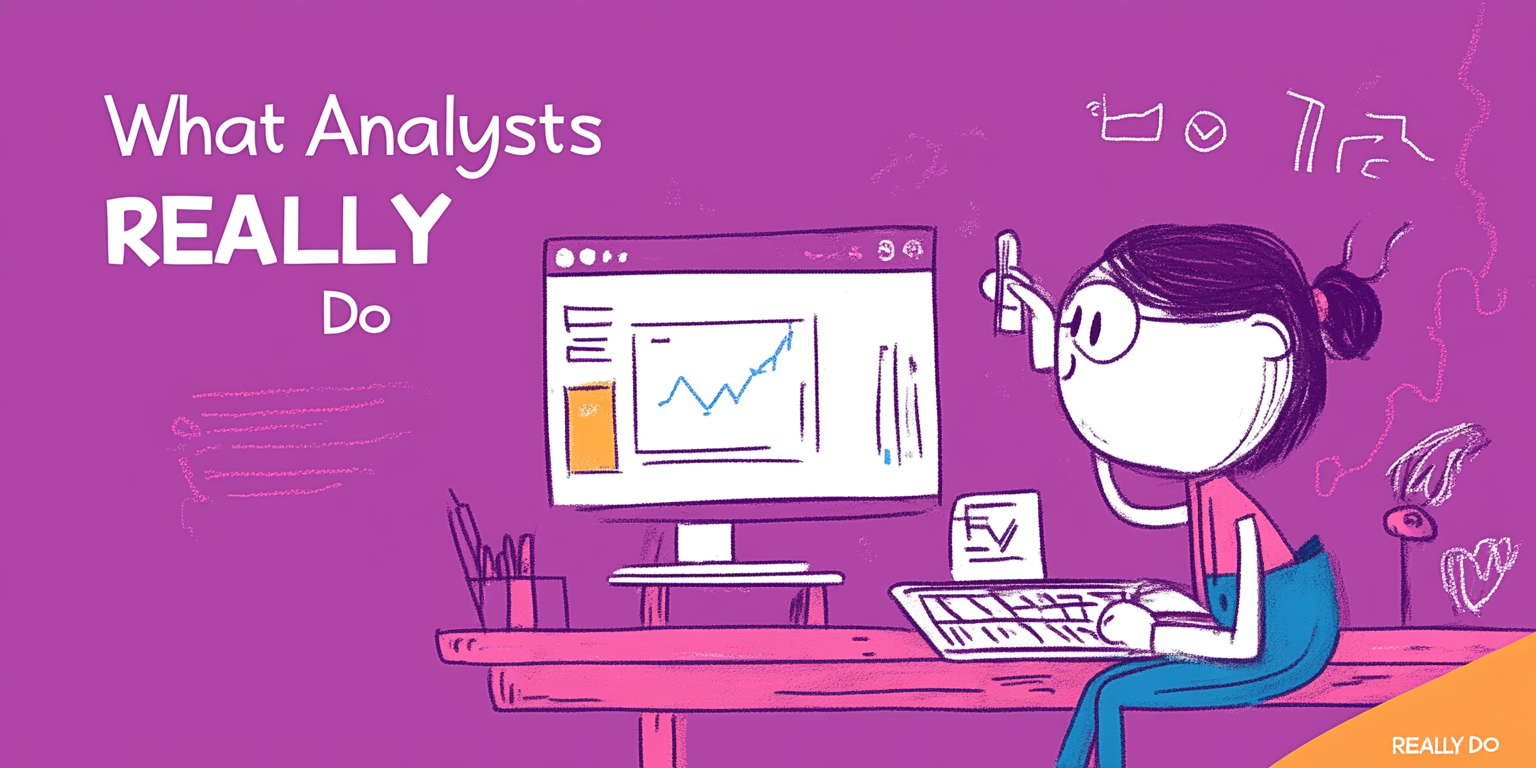Understand What Data Analytics Really Means
What to do:
Learn the actual job of a data analyst: not just creating charts, but cleaning data, finding patterns, drawing insights, and influencing business decisions.
Why it's important:
Without a true understanding of what analysts really do, you'll focus on the wrong skills and be unprepared for interviews or job tasks.
Detailed Guide:
1. Research Real Data Analyst Responsibilities
Most students think data analytics is all about making pretty charts and dashboards. In reality, analysts spend 60-80% of their time cleaning messy data and preparing it for analysis. You need to understand the full workflow:
- Data collection: Gathering data from various sources (databases, APIs, files)
- Data cleaning: Handling missing values, outliers, and inconsistent formatting
- Exploratory analysis: Finding patterns and relationships in the data
- Insight generation: Drawing meaningful conclusions from analysis
- Communication: Presenting findings to stakeholders and influencing decisions
How U2xAI helps: Ask U2xAI to explain a typical day in the life of a data analyst in different industries. For example:
U2xAI will provide detailed comparisons that help you understand industry-specific nuances, which is crucial for tailoring your interview preparation.
- Analyze Real Job Descriptions
Job descriptions reveal what employers actually value, which might differ from what courses emphasize.
How U2xAI helps: Have U2xAI analyze multiple job descriptions to identify patterns. Include the job descriptions at the end of the below prompt
For example, when I did this with healthcare analyst roles, U2xAI pointed out that SQL was mentioned in 100% of postings, while Python was only in 60%. It also highlighted that healthcare roles emphasized HIPAA knowledge and patient data experience—insights that helped me prepare targeted examples for interviews.
3. Understand Business Context
Data analysis doesn't happen in a vacuum—it serves business goals. Understanding how analytics drives decision-making is crucial.
How U2xAI helps: Ask U2xAI to explain business applications:
When I asked this before my Target interview, U2xAI explained how analysts help optimize seasonal inventory using historical sales data, weather patterns, and regional preferences. This helped me speak intelligently about retail analytics during my interview, even without prior retail experience.
4. Practice Explaining Analytics Concepts
Being able to explain what data analytics is—in simple terms—is often an interview question itself.
How U2xAI helps: Practice your explanations with U2xAI:
Benefits of Using U2xAI vs. Not Using It:
When preparing for your data analytics interview, using U2xAI significantly enhances your chances of success:
- Understanding: With U2xAI, you'll gain a clear and accurate understanding specifically tailored to what employers expect. Without U2xAI, your knowledge risks being generic and disconnected from real-world specifics.
- Speed: Using U2xAI provides a fast, personalized learning path, saving weeks of confusion. Without it, you're likely to experience slow learning, relying on scattered and inconsistent resources.
- Confidence: U2xAI offers practical scenario practice, quickly building your interview confidence. Without U2xAI, uncertainty about real analyst responsibilities could leave you feeling less prepared and hesitant.
- Interview Performance: U2xAI equips you to give highly convincing interview answers based on realistic scenarios. Without this support, your answers may be weak, vague, or fail to meet interviewer expectations.











